Bison Calf
Since my last post about the bison herd was running a little long, I decided to wait until a later post to show you the little bison calf, the newest member of the herd at the Tallgrass Prairie National Preserve in east central Kansas.
Born May 11, 2011, she was just a little over a month old when we visited in mid-June. She is surrounded by the adults a good part of the time, but I did finally get a chance to get a good look at her, and she is just the cutest baby ever.
Did you know that the American Bison once ranged in large herds from Canada to Mexico and east to the Appalachian mountains? But due to over-hunting it almost became extinct by the late 19th century. Today, the bison lives in a few national parks and other reserves. Bisons typically mate in August and September and gestation is about 9 months. A calf may nurse until the cow has her next calf, which sometimes is not for another 18 months. Bison calves weigh about 50 pounds at birth. At a month old, this one probably weighs about 100 pounds. She will shed her newborn light brown coat for a dark brown in another month.
While watching the calf and her mama, we noticed couple of cute behaviors between them.
One is that the cow will rest her chin on the calf every once in a while.
Might be a reassuring gesture towards that calf, or maybe a little affection.
The other cute behavior is something I’ve noticed our cows and calves do. The calf walks from one side of her mama to the other by walking under her chin and pressing herself against mama as she goes.
We think it is part of how they maintain the mother/baby bond.
It seems the whole herd keeps an eye out for this one little calf.
Harland and I were speculating just how long our life expectancy would be if we touched the little squirt.
Probably not very long at all.
But it’s heartwarming to see so much caring for this one precious life.
~~~~~~~~~~~~~~~~~~~~~~~~~~~~~~~~~

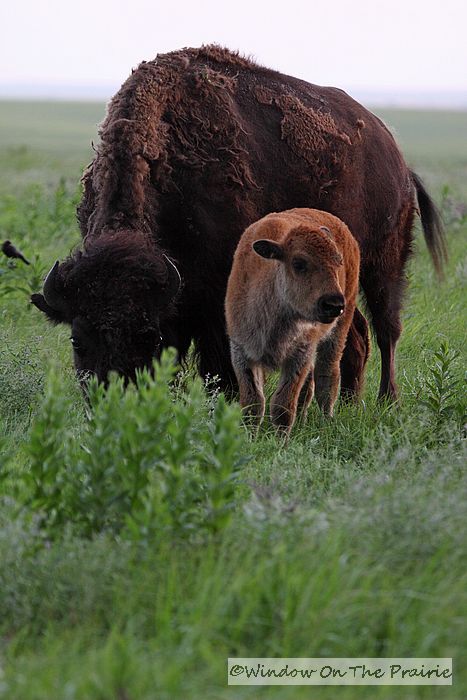
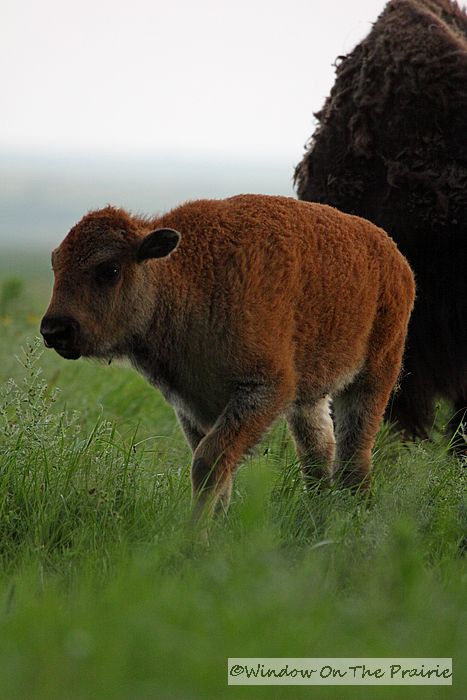
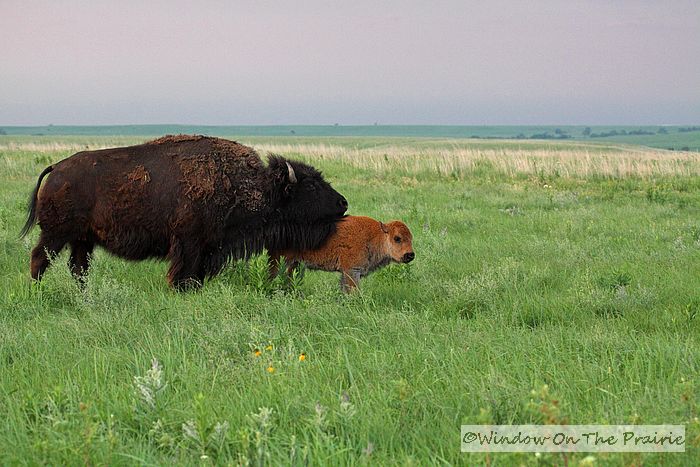
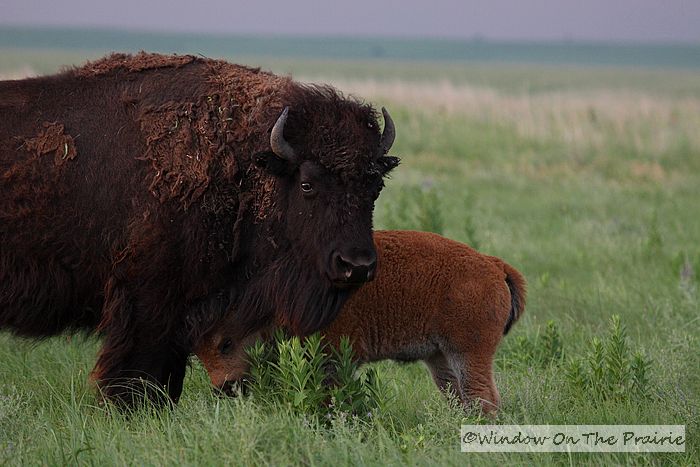
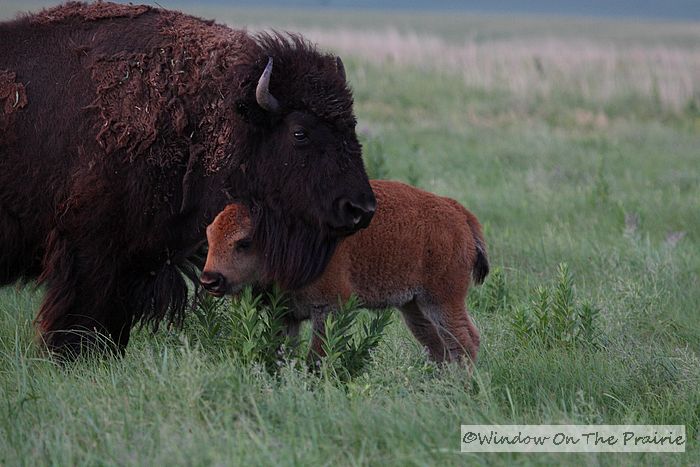
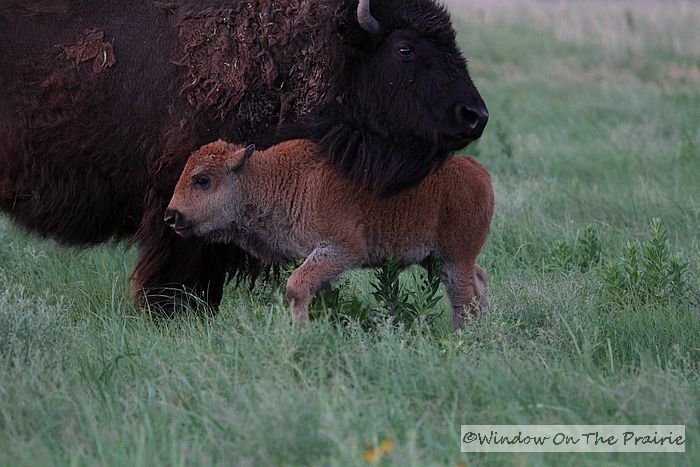
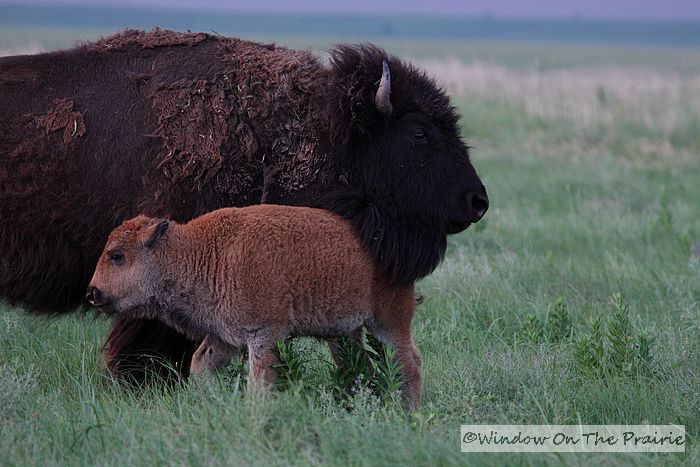
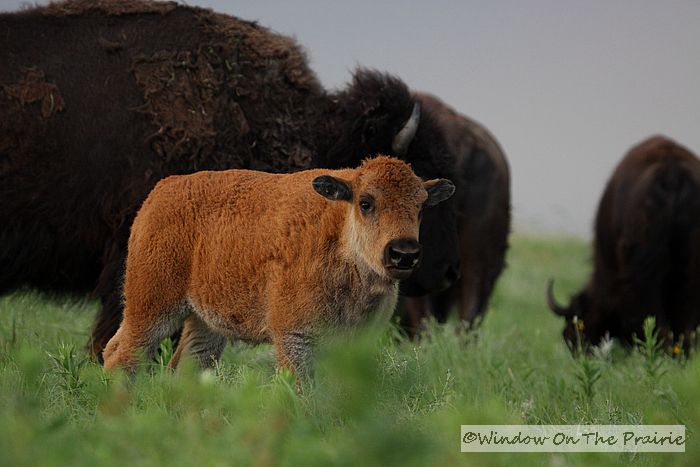
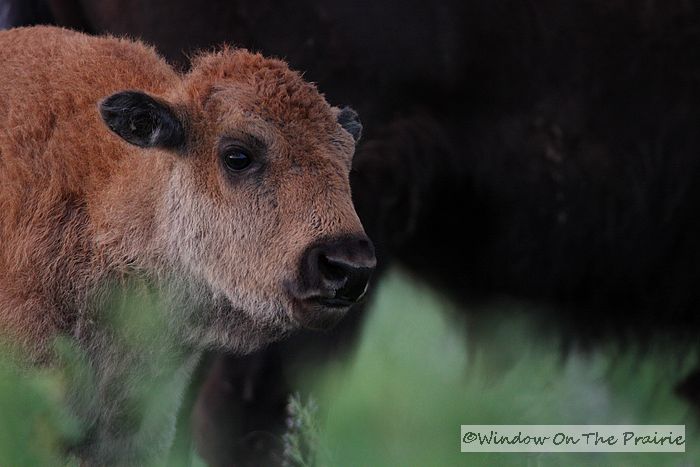

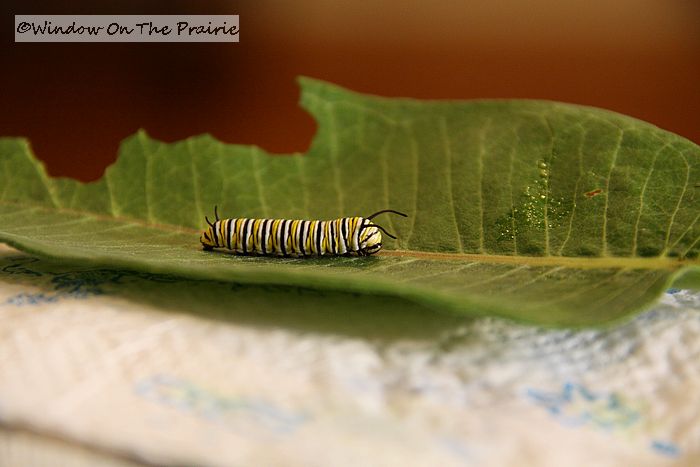
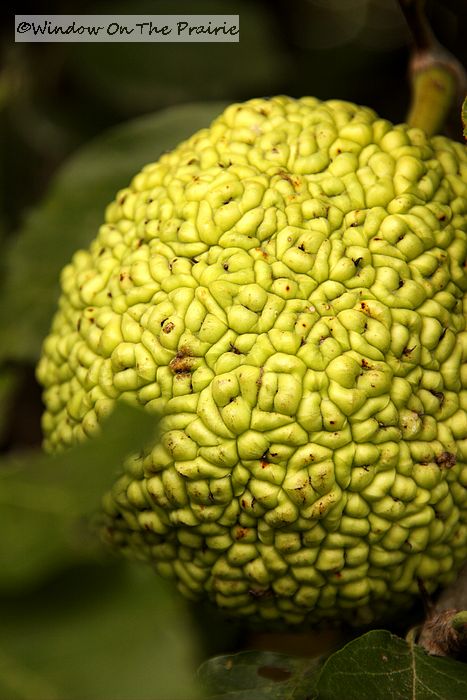
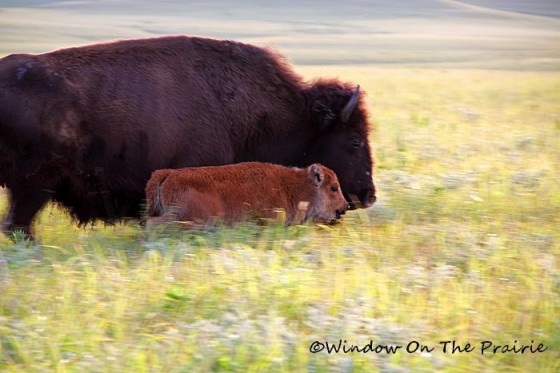
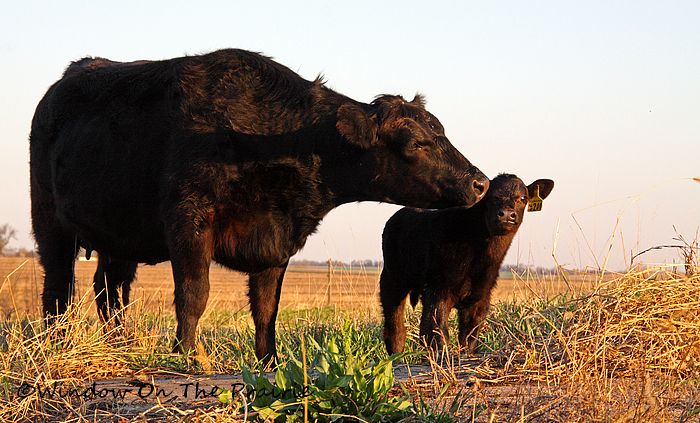

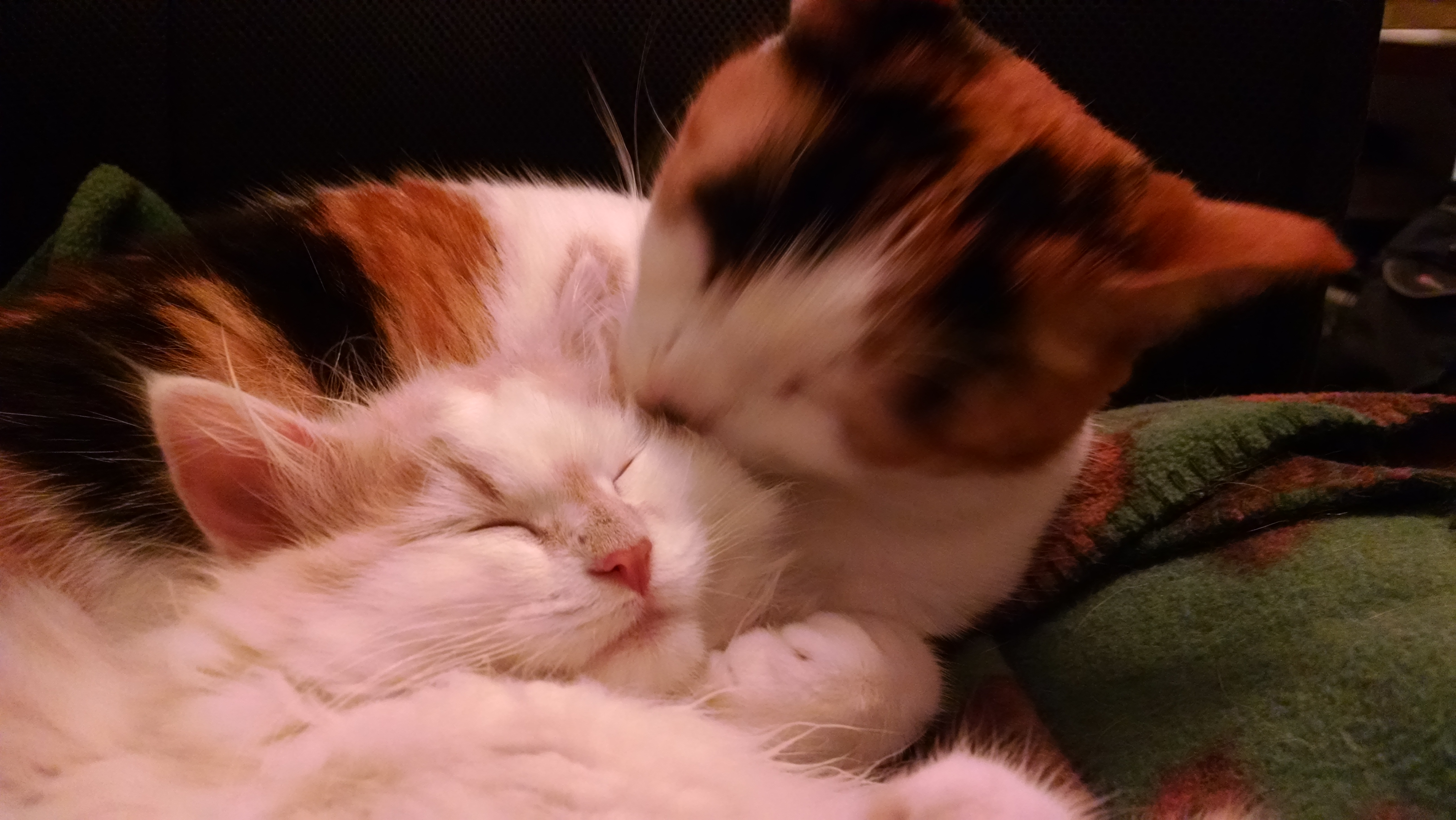
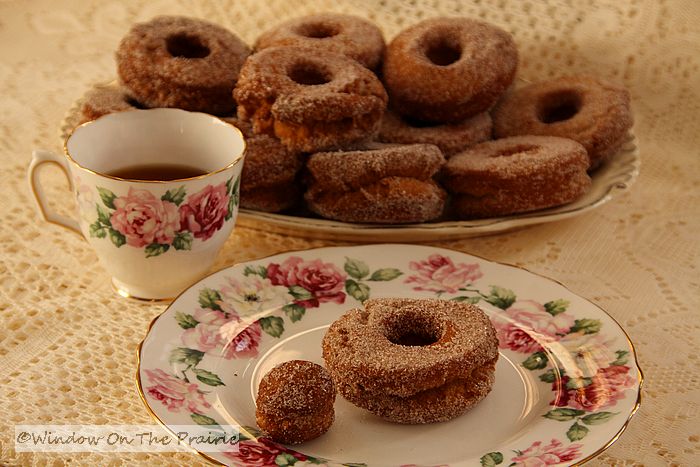
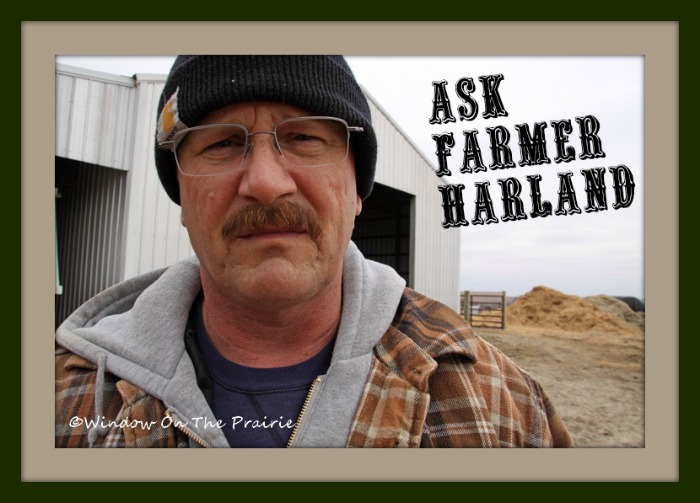
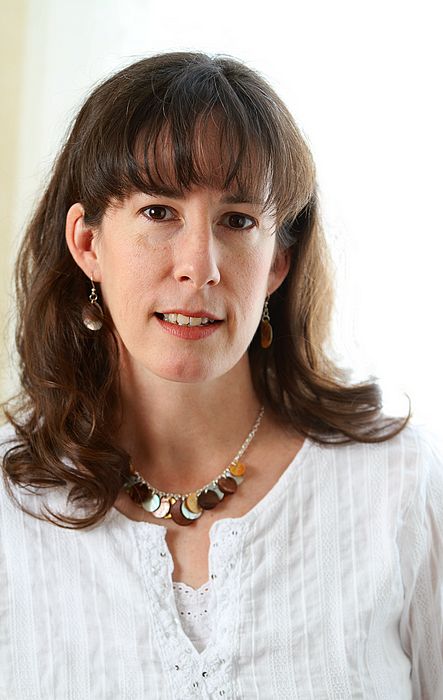


These photos are amazing. There is a bison herd not far from my place. But they look more like cows in a someone’s pasture than the wild animals they truly are.
Happy Fourth!
Willow
True, from a distance they look just like big cows, but they are so big up close.
Happy Belated 4th to you as well Willow!
I believe elephants have the same protective herds that bisons and cows have. At least it looks like it in photos.
I’ve seen nature programs about elephants where they are shown as being very protective of their young. So fascinating, and wouldn’t it be fun to see in person?
Your words and pictures have put a real desire to visit Tallgrass Park. It seems a great place to sit and daydream of ages gone by.
Thanks Sally. Do visit some day if you can.
You are so lucky to live where you live. I wish we can bring the kids there some day. I just want to squish that calf. She looks like a soft sheep.
Happy 4th
God Bless
God Bless you as well Mary, and Happy Belated 4th!
Such a cute little one. I think I’d agree that your lifespan would be cut very short even for just acting like you might touch the calf.
I’m sure you’re right. Nothing would be left but some camera equipment lying on the ground. 🙂
I thought that this might have been where you saw her when I as the pic on the CITR site. (mamajhk)
I had to chuckle about your petting deduction – spot on. The 13 original bison continue to remain as one family and as you reported, if approached the adult bison, whether standing or laying, will position themselves between the approacher and calf and often surround the calf. Again great photos!
And did you notice how subtle the surrounding of the calf is? They just graze their way into position and at first you don’t realize they are even protecting the calf. Beautiful animals. Thank you Paula.
Wonderful to see these pictures of “Little Squirt”.